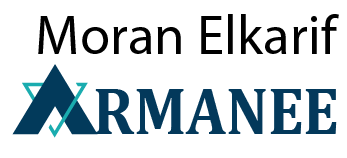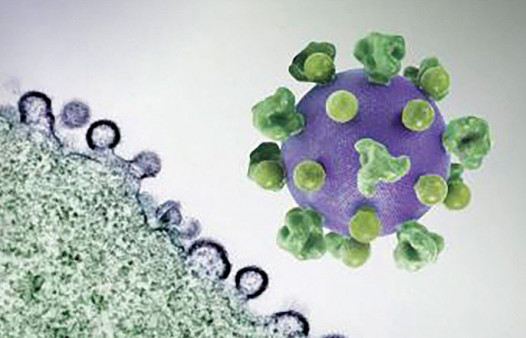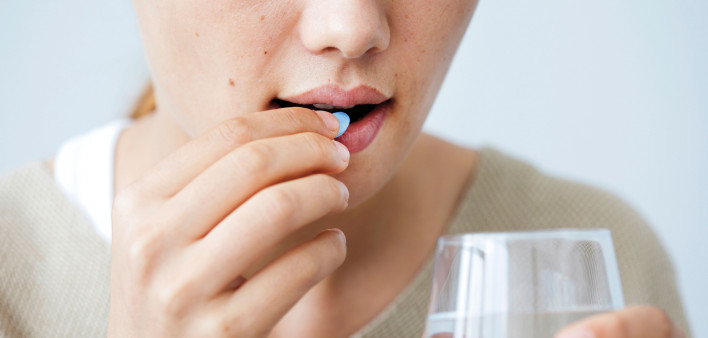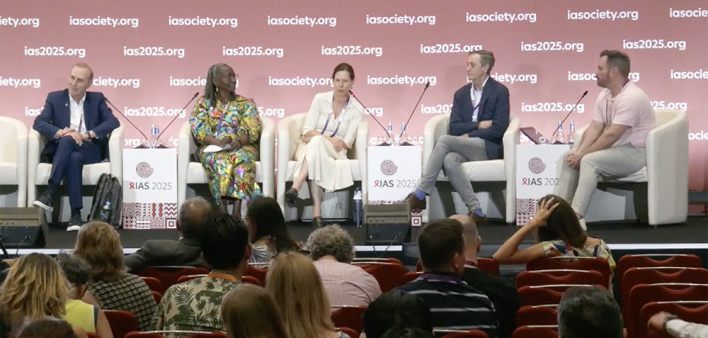Anktiva, an IL-15 superagonist approved for bladder cancer treatment, may help maintain viral control after stopping antiretrovirals.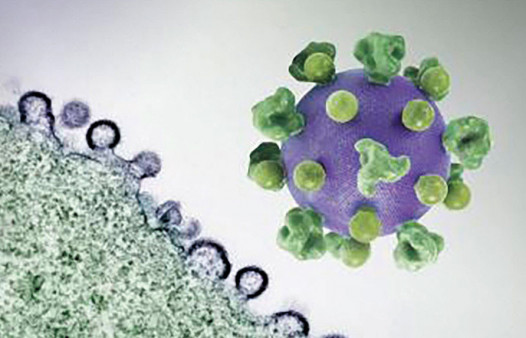
More than half of people who received a pair of broadly neutralizing antibodies (bnAbs) plus the immune-modulating drug Anktiva (N-803) had delayed viral rebound or maintained a low or suppressed viral load during antiretroviral treatment interruption, according to results from a small study presented this week at the International AIDS Society Conference on HIV Science (IAS 2025) in Rwanda.
Among 24 participants who stopped antiretroviral therapy (ART), 58% did not meet the criteria for restarting treatment at six months, nearly a third did not need to resume treatment after a year and one is still off antiretrovirals after more than 30 months, with follow-up ongoing, Marina Caskey, MD, of Rockefeller University, reported.
“So far, what we are most excited about is that we see among participants with delayed rebound that they show different patterns of rebound dynamics, and some of these participants maintain low level viremia for a prolonged period of time,” she said.
Antiretroviral therapy can keep HIV suppressed indefinitely, but the virus inserts its genetic blueprints into CD4 T cells and establishes a long-lasting latent viral reservoir that is nearly impossible to eradicate. Cure researchers have tried many different strategies, including “kick and kill,” which aims to reactivate dormant HIV and flush the virus out of hiding—known as latency reversal—while boosting immune responses to fight it.
People living with HIV normally produce antibodies against the virus, but these mostly target parts that are hidden or highly variable. However, a small proportion of individuals naturally make bnAbs that target conserved parts of the virus. Manufactured versions of these specialized antibodies are being explored in HIV prevention, treatment and functional cure research.
Drugs that stimulate immune function could potentially help bnAbs work better to control HIV. Anktiva, from ImmunityBio, is an interleukin 15 (IL-15) receptor superagonist that activates natural killer (NK) cells and CD8 killer T cells and enhances CD4 helper T-cell activity and proliferation of memory T cells.
Last year, the Food and Drug Administration approved Anktiva for treatment of bladder cancer after a Phase II/III study showed that more than half of people treated with the immune modulator plus standard BCG immunotherapy experienced sustained tumor remission. Anktiva is being studied for several other types of cancer in combination with immune checkpoint inhibitors, which unleash T-cell activity.
Anktiva is also being explored in HIV cure research. In addition to stimulating immune cells, it appears to have latency-reversing properties, suggesting it might both “kick” and “kill.”
“Our current strategy to not just treat but cure HIV infection involves both inducing HIV out of its latent state in host T cells and removing or killing infected cells via an immune response or immunotherapy,” ImmunityBio founder and executive chairman Patrick Soon-Shiong, MD, explained in a previous news release announcing the launch of a cure trial. “Anktiva is capable of triggering both of these mechanisms, as it can both activate viral transcription in CD4+ T cells—i.e., remove the virus from latency—and activate CD8+ memory cells and natural killer cells that recognize and kill HIV-infected host cells.”
In 2022, Timothy Schacker, MD, of the University of Minnesota, and colleagues reported that people on ART who received Anktiva experienced proliferation or activation of CD4 and CD8 T cells and NK cells. HIV transcription in memory CD4 cells initially increased, followed by a persistent decrease in the viral reservoir. Last year, the researchers reported that people who received an infusion of NK cells from a relative plus Anktiva saw a moderate decrease in HIV-producing cells in their lymph nodes.
Two clinical trials—ACTG A5386, sponsored by the National Institutes of Allergy and Infectious Diseases (NCT04340596), and another sponsored by Rockefeller University (NCT05245292)—are evaluating Anktiva plus bnAbs based on the hypothesis that the antibodies might neutralize HIV awakened by the superagonist and tag infected cells for destruction by activated NK cells. In a previous study of monkeys treated with two bnAbs plus Anktiva, viral rebound occurred soon after stopping ART, but this was followed by durable viral control in a majority of the animals.
At the IAS meeting, Caskey presented initial findings from the second clinical trial, testing two bnAbs—3BNC117-LS and 10-1074-LS—plus Anktiva. 3BNC117 targets the CD4 binding site HIV uses to enter cells while 10-1074 binds to the V3 loop on HIV’s surface. (Gilead Sciences is developing long-acting versions of these antibodies, dubbed teropavimab and zinlirvimab, respectively.)
This study enrolled 28 people with chronic HIV infection on stable antiretroviral therapy with a sustained undetectable viral load. All but one were men, 43% were Black, 29% were white and the median age was 42 years. They had been diagnosed with HIV and on antiretroviral treatment for a median of 10 years. They had a current CD4 count above 450 (median 715) and had never fallen below 200.
All participants received single infusions of the two bnAbs followed by up to eight subcutaneous injections of Anktiva given three weeks apart. Two days after bnAb administration, they started an analytical treatment interruption. They resumed ART if they had four consecutive weekly viral load measurements above 1,000 copies, had a CD4 count below 350, experienced HIV symptoms or became pregnant. Viral load was monitored every one to two weeks, with viral rebound defined as two consecutive measurements over 200.
Four people resumed antiretrovirals before viral rebound occurred. By 24 weeks, 10 of the remaining participants experienced early viral rebound, but 42% did not have two consecutive viral loads above 200 and 50% did not have two measurements above 1,000. Six others had delayed viral rebound, mostly occurring by 32 weeks but in one case at about 50 weeks. The remaining seven participants had fluctuating but mostly low-level viral load.
Among the 24 people who did not restart treatment prior to viral rebound, 67% remained off ART at 20 weeks, 58% were off treatment at 48 weeks, 29% were still off at 48 weeks and three (13%) did not need to resume ART even at 72 weeks. Of these, one remains off antiretrovirals at 125 weeks, one chose to restart at 72 weeks despite very low viremia and the third experienced late viral rebound and resumed treatment at 81 weeks. Everyone who restarted ART achieved viral resuppression within four weeks. Most participants had evidence of resistance to the bnAbs, especially 10-1074-LS, at the time of viral rebound.
The bnAbs and Anktiva were generally safe and well tolerated, and most reported adverse events were mild to moderate. There were no bnAb infusion reactions. Anktiva injection site reactions, including redness and swelling, were common but diminished after the third shot. No one discontinued due to adverse events.
This study has some limitations which have implications for patient safety. The participants were not tested in advance for sensitivity to the bnAbs, meaning they might have had pre-existing resistance. However, the PhenoSense test used to assess resistance is not a very good predictor of viral rebound, Caskey and other speakers in session noted. Some apparently resistant viral variants can still be highly responsive, and relying on the assay could exclude some good responders. The criteria for restarting antiretrovirals—four viral loads above 1,000 with no reported upper limit—could raise the risk for disease progression and HIV transmission.
What’s more, there was no control group receiving the bnAbs alone, making it hard to say how much benefit Anktiva added. In the RIO study, reported at this year’s CROI, three quarters of men with early-treated HIV who received the same two bnAbs did not experience viral rebound five months after discontinuing antiretrovirals, and a third were still in remission at 18 months.
The FRESH study, which enrolled women in Africa who started antiretrovirals during acute infection, found that 30% of those who received two other bnAbs, VRC07-523-LS and CAP256V2-LS, plus the immune-modulating drug vesatolimod maintained viral suppression without antiretrovirals for 12 months. Vesatolimod, a toll-like receptor 7 agonist, activates NK cells and T cells and may also have latency-reversing properties. Here too, there was no control arm receiving the bnAbs alone to tease out the added effect of vesatolimod.
The ongoing ACTG A5386 study is a randomized trial that assigns participants to receive two bnAbs (VRC07-523LS and 10-1074) plus Anktiva or the superagonist alone, but again, there is no comparison group assigned to just the bnAbs.
“We are now trying to understand what’s involved, what are the underlying mechanisms,” Caskey concluded. “How much of it may be related to residual antiviral activity, how much of it may be modulation of host immune responses with perhaps associated fitness costs to the rebound viruses? And the big question for this study is, will we be able to determine if N-803 played a role in the effects we are seeing? It will be really nice to compare across all of the studies, and I hope that we will be able to do so.”
Click here for more news about HIV cure research.
Click here for more news from IAS 2025.
POZ is an official media partner of IAS 2025.
- #Anktiva
- #broadly neutralizing antibodies
- #CD4
- #Cure
- #functional cure
- #IAS 2025
- #immune activation
- #immunotherapy
- #natural killer cell
- #reservoir
- #resistance
- #T cell
- #treatment interruption
- #viral rebound
